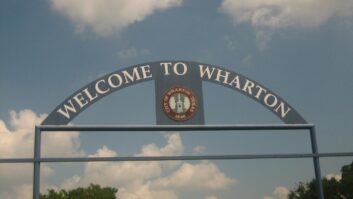
An image from Weiner’s website
One in a series about AM revitalization comments.
Engineer Burt Weiner is something of an expert in radio interference. He thinks the AM band remains a “vital resource” but that its quality has been neglected; and he believes most engineers want the FCC to take a more active role in protecting AM from that internal neglect.
Weiner is among those who have filed comments to the commission’s notice of proposed rulemaking about so-called “AM revitalization.” He has been involved in broadcast engineering since 1957; his firm specializes in the measurement and mitigation of signal interference.
Weiner writes that the band has evolved “into such low technical standards and regards” and says many broadcast engineers weren’t around when AM radio “sounded very good and was virtually noise-free.”
His recommendations:
-The FCC needs to better enforce rules it already has.
-The commission must restart random inspections “of all transmission aspects of broadcast transmitter facilities.” Weiner says most engineers now feel the FCC’s failure to inspect means it no longer cares, and thus stations no longer pay attention to facilities or emissions until they experience failure. “Responsible engineers still believe that the commission is supposed to take an active role in preventing this apparent neglect,” which can affect not only one station but others on the dial.
-The commission should strictly enforce the Part 15 rules for unintentional radiators that create damaging interference to AM reception.
-Mandatory annual measurements must be maintained as written, Weiner says. “There are groups that have a pecuniary interest in having the requirement for these measurements as well as 73.44 deleted from the rules. This must not be allowed to happen.”
-Rules regarding AM modulation levels that allow negative peaks to 100 percent should be rewritten. “Negative modulation amplitude of 100 percent results in carrier cutoff that more often than not produces buckshot and/or splatter. The rules should clearly specify a maximum negative peak modulation of 96 percent, which is only a fraction of a Decibel lower and would not be discernible to any listeners. This would allow for transmission system response and instrumentation errors.”
-All broadcast FM receivers must have a broadcast AM receiver section with a minimum standard of performance, “not limited to just acceptable bandwidth, but overall sound fidelity.”
-The commission must take steps to avoid abuse of translators. Weiner believes FM translators for AMs “do nothing to improve or revitalize the AM broadcast band, and in fact pull listeners away from AM broadcast.” But if they must exist, the commission needs to learn from what he describes as the history of abuse of FM translators.
-AM translator rules should have certain restrictions. “Pair all AM-to-FM translators to its parent AM station by license … To be non-transferable except by way of transfer of ownership with its parent AM. … To prohibit an AM translator to LMA with any station within or outside of its ownership. … Prohibit an AM translator from carrying separate programming for any reason. … Prohibit a translator from operating for more than 14 hours after the parent AM station is off the air for any reason, and require the parent AM station to operate continuously and at licensed values during normal Daytime hours. …AM to FM translators may not be used to extend the parent AM station’s coverage beyond its primary signal coverage.”
He said the above recommendations will allow a daytime-only station to provide community service at night, and also prevent abuse of translator rules in which an AM with an FM translator could allow its AM facilities to fall into disrepair or claim hardship and continue to operate as an FM. He says vaguely written rules leave loopholes for abuse.
He also believes raising power for existing AMs would not help but hurt, though increased interference.
And he recommends that the FCC revisit IBOC digital AM: “In its relatively brief history, it has been more destructive than beneficial to the AM broadcast band as a direct result of the severe interference it causes to adjacent-channel signals.”
Watch our page radioworld.com/amcomments for summaries of other comments to the FCC NPRM.










